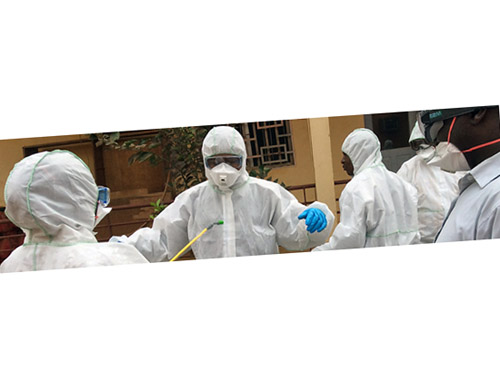Ebola

Published: 18 Jun 2025
ICD9: 078.89 ICD10: A98.4 ICD11: 1D60.0
Ebola, more formally known as Ebola virus disease (EVD) or Ebola hemorrhagic fever (EHF), is a rare but severe and often fatal illness in humans and other primates.
Here's a breakdown of what it is:
![]() Cause: It's caused by infection with one of several Ebola viruses.
Cause: It's caused by infection with one of several Ebola viruses.
![]() Transmission: The virus is transmitted to people from wild animals (like fruit bats, primates, or forest antelopes) and then spreads in the human population through direct contact with:
Transmission: The virus is transmitted to people from wild animals (like fruit bats, primates, or forest antelopes) and then spreads in the human population through direct contact with:![]()

![]() Bodily fluids (blood, urine, saliva, feces, vomit, semen) of an infected person
Bodily fluids (blood, urine, saliva, feces, vomit, semen) of an infected person![]()

![]() Objects contaminated with the virus (needles, bedding, clothing)
Objects contaminated with the virus (needles, bedding, clothing)![]()

![]() Infected animals
Infected animals
![]() Symptoms: Ebola symptoms are often sudden and can include:
Symptoms: Ebola symptoms are often sudden and can include:![]()

![]() Fever
Fever![]()

![]() Severe headache
Severe headache![]()

![]() Muscle pain
Muscle pain![]()

![]() Weakness
Weakness![]()

![]() Fatigue
Fatigue![]()

![]() Diarrhea
Diarrhea![]()

![]() Vomiting
Vomiting![]()

![]() Abdominal pain
Abdominal pain![]()

![]() Unexplained hemorrhaging (bleeding or bruising)
Unexplained hemorrhaging (bleeding or bruising)
![]() Severity: EVD is a very serious disease with a high fatality rate, although survival rates have improved with better care.
Severity: EVD is a very serious disease with a high fatality rate, although survival rates have improved with better care.
![]() Treatment: There are now approved vaccines and treatments for Ebola. Early supportive care with rehydration and symptom relief is crucial.
Treatment: There are now approved vaccines and treatments for Ebola. Early supportive care with rehydration and symptom relief is crucial.
![]() Prevention: Prevention measures include:
Prevention: Prevention measures include:![]()

![]() Avoiding contact with infected people and animals
Avoiding contact with infected people and animals![]()

![]() Practicing good hygiene (frequent handwashing)
Practicing good hygiene (frequent handwashing)![]()

![]() Safe burial practices
Safe burial practices![]()

![]() Vaccination (when available)
Vaccination (when available)
Ebola outbreaks are rare but can be devastating. Public health measures, including surveillance, contact tracing, and isolation of cases, are essential to control the spread of the virus.